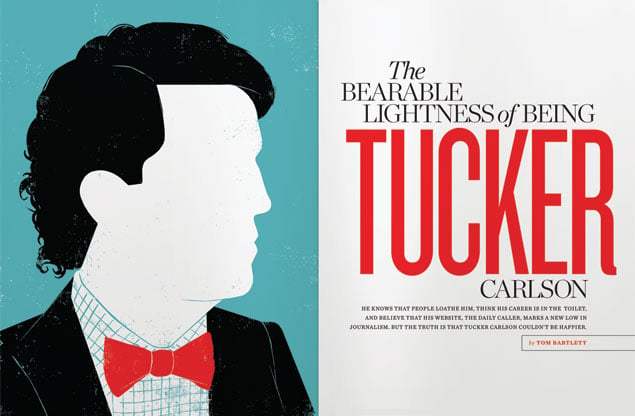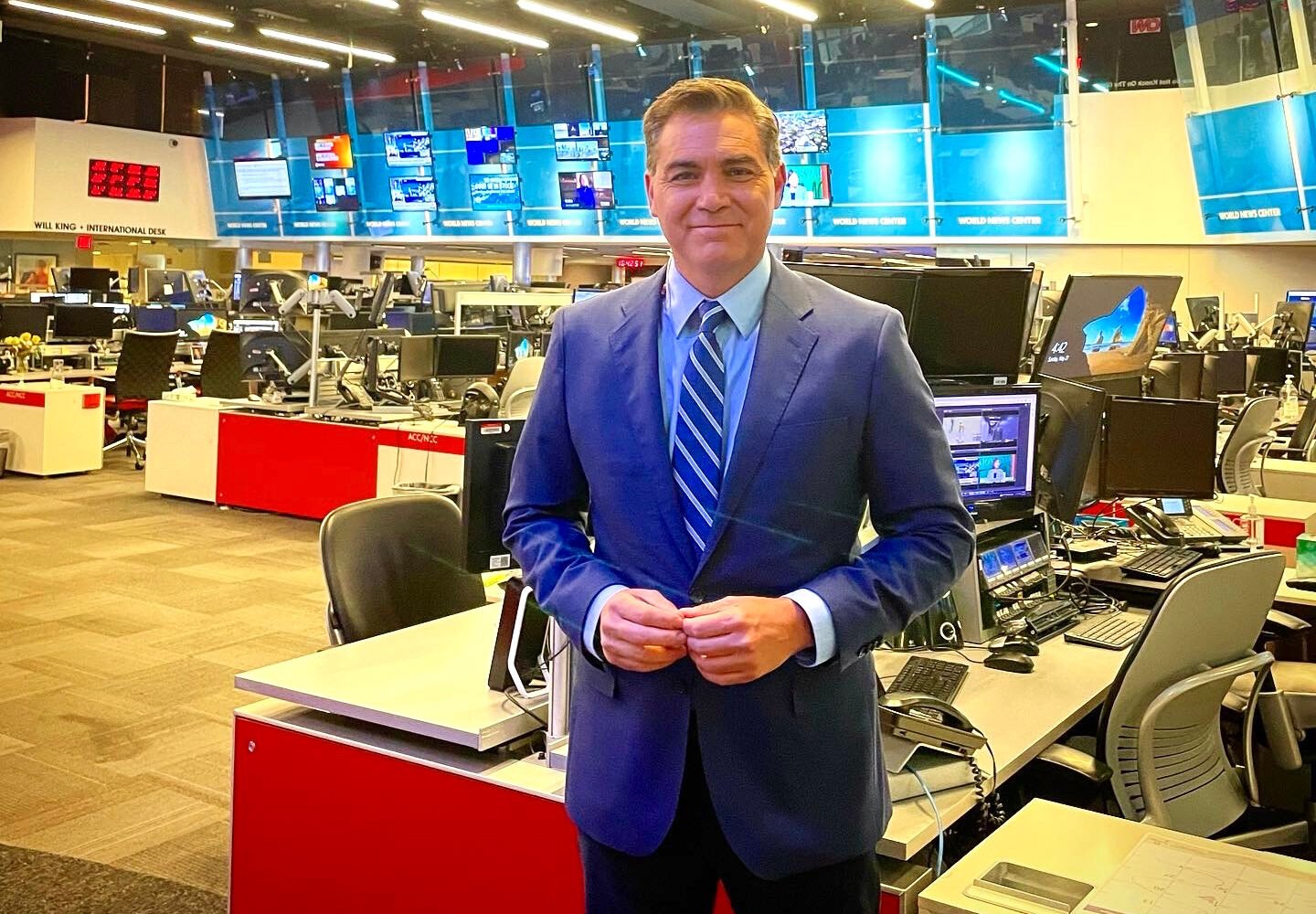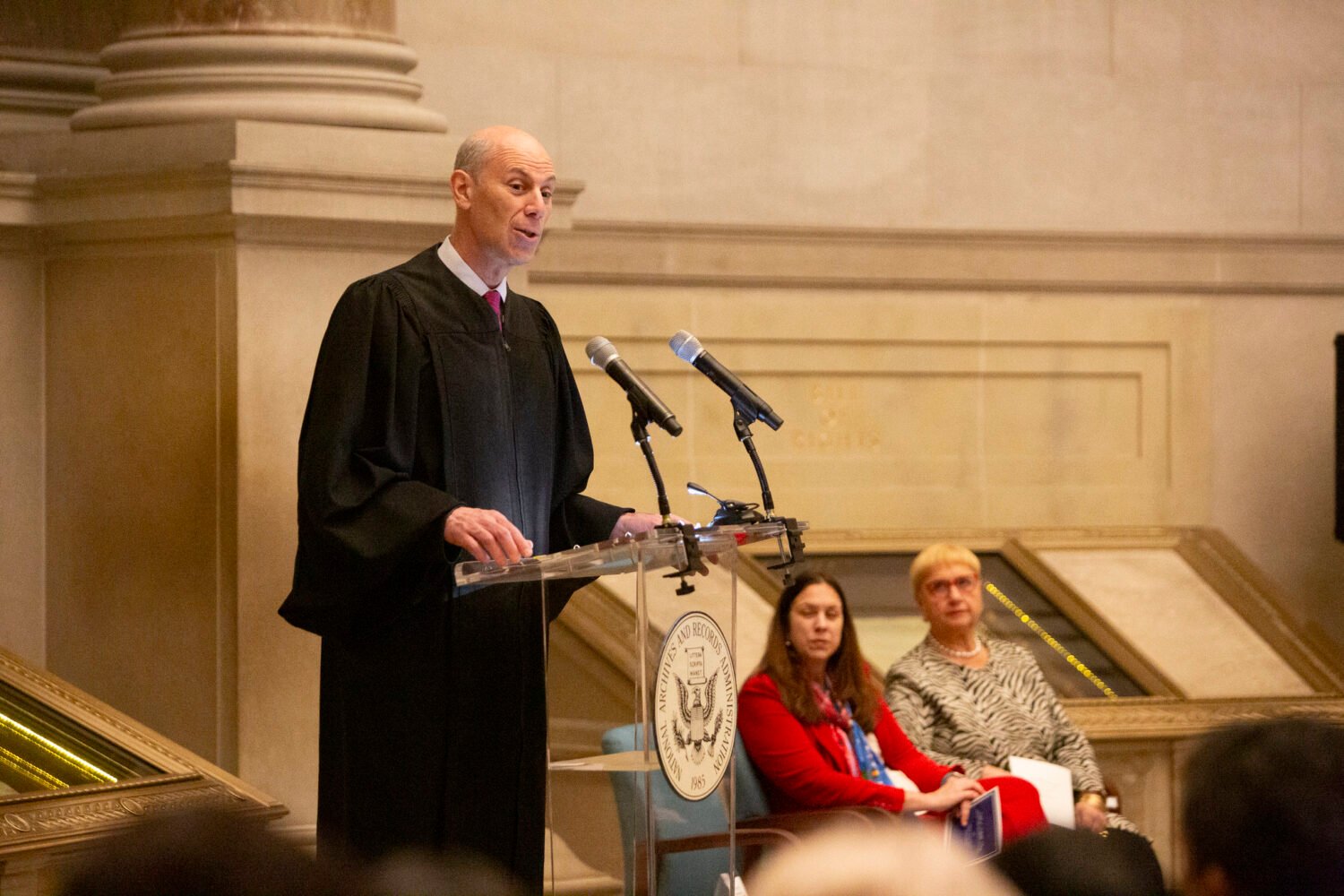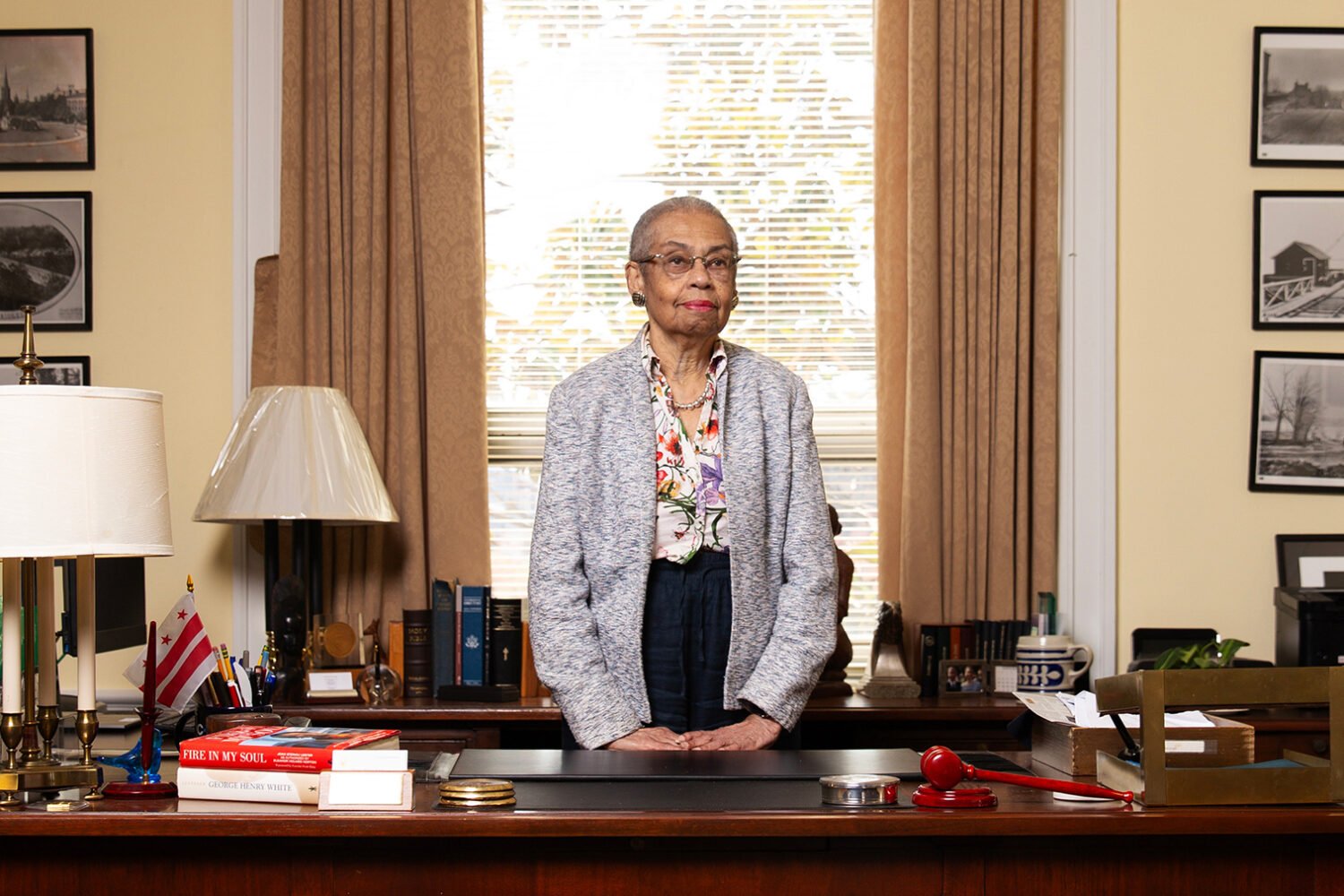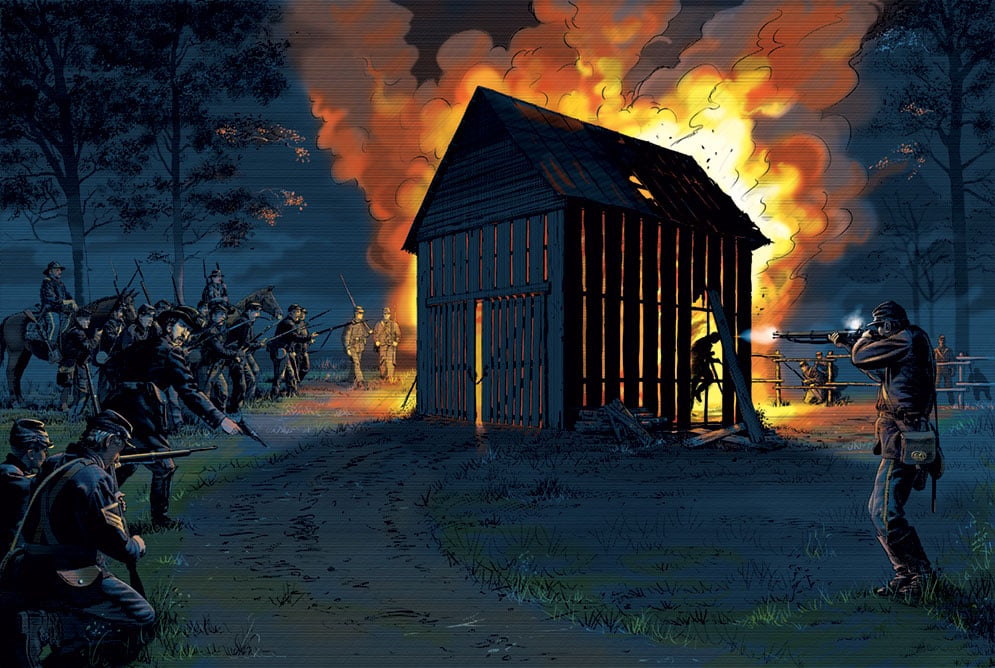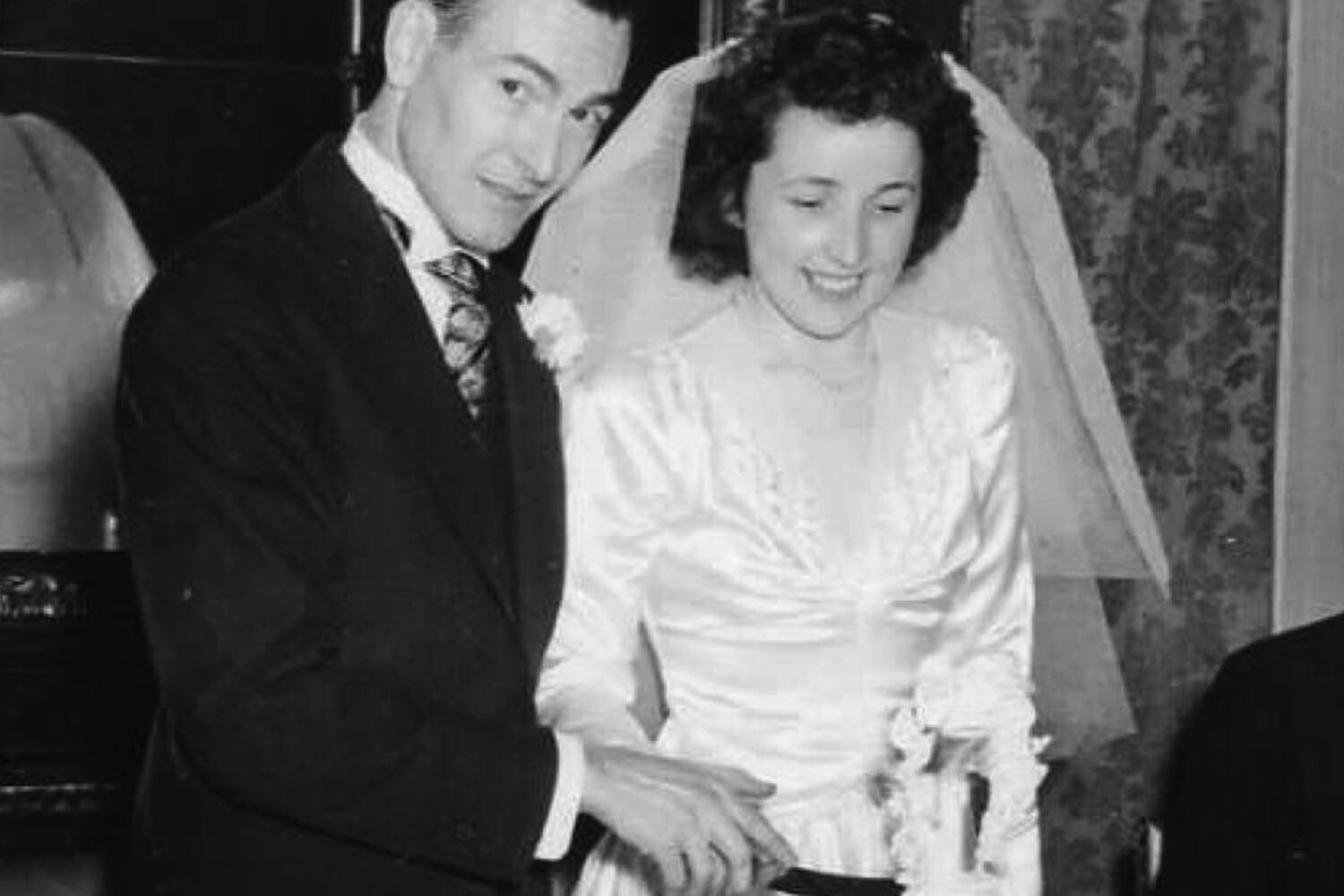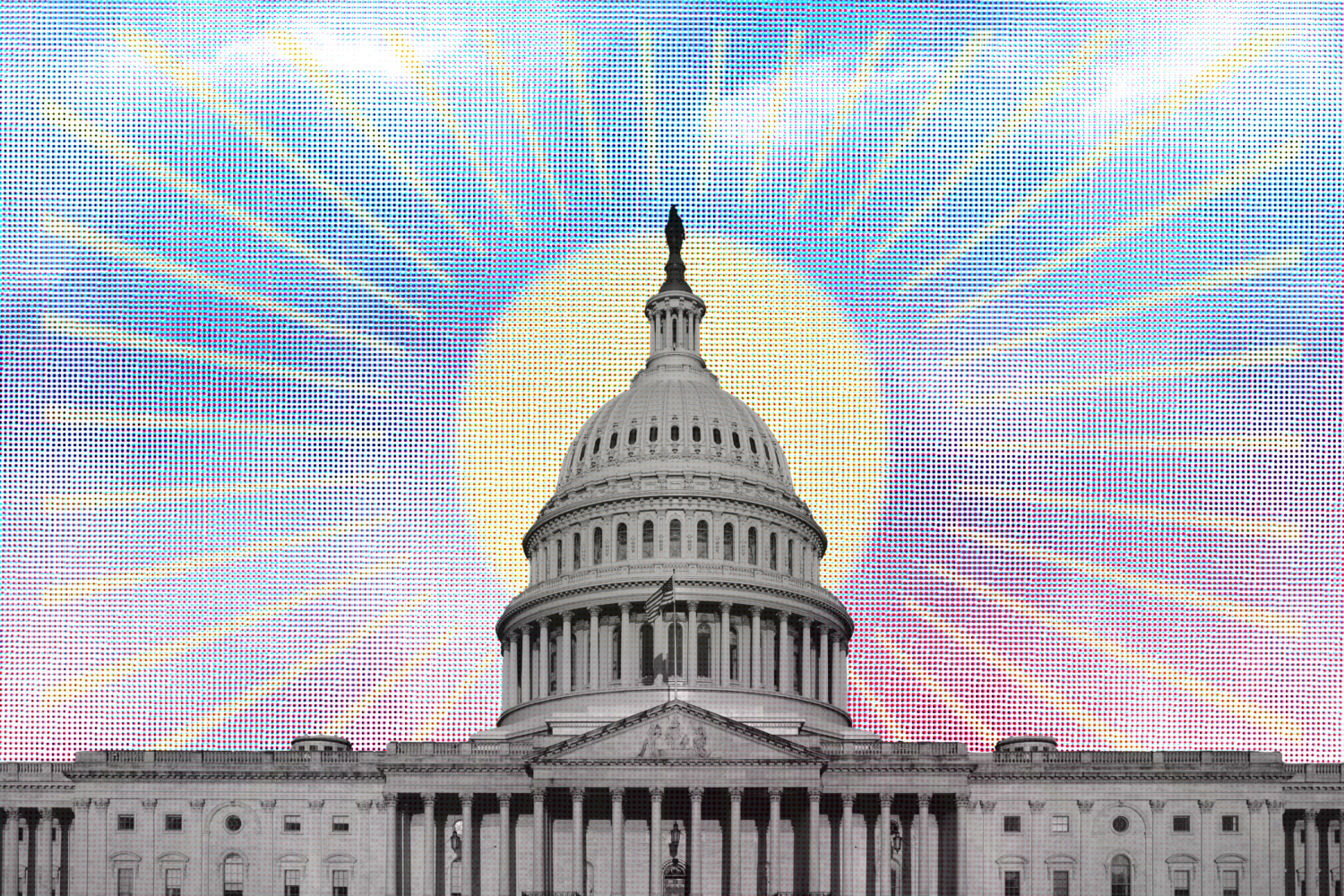I’m searching for a caricature of Tucker Carlson at the Palm,
the restaurant near Dupont Circle wallpapered with the faces of the city’s
famous and semi-famous, along with a bunch of other people who must be
excellent tippers.
Carlson is firmly in the first category. He’s been on
television almost constantly for more than a decade, hosting shows on CNN,
PBS, and MSNBC, including one titled simply Tucker. He’s the guy with the
bow tie who isn’t George Will. (Actually, he ditched the bow tie years
ago, but the accessory is so fused with his identity now that it doesn’t
matter whether it’s in his closet or around his neck.) These days he pops
up on Fox News, expounding on this and that, deploying a “Come on!” or an
“Absolutely!” as needed.
But where is he? There’s Margaret Carlson, the Bloomberg
columnist. But no Tucker. Which is odd, considering he’s been a regular at
the Palm for more than ten years—it’s not unusual for him to eat here a
few times a week or even twice in a day. The interview for an early
profile, published in New York magazine, took place at the Palm.
Carlson was 31 then—he’s 43 now—and the article proclaimed him “the
world’s most ascendant pundit.” This was at the dawn of George W. Bush’s
reign, and Carlson was the wisecracking contrarian conservative with
limited confidence in the newly arrived Texan. (“I don’t think he has any
idea what’s coming,” Carlson said at the time.)
Maybe it has to do with a story Carlson once wrote about Tommy
Jacomo, the Palm’s executive director. In the mostly flattering piece,
Carlson mentioned Jacomo’s long-ago brush with the law—he was acquitted of
charges that he’d helped arrange the sale of an ounce of cocaine—which
embarrassed and angered him. Pissing people off accidentally is a hazard
of journalism. The two later patched things up, and Carlson was again
persona grata.
It was at the Palm that Carlson and Neil Patel—his college
roommate and close friend and a former adviser to Dick Cheney—brainstormed
the idea for the Daily Caller, a conservative news site in the mold of the
liberal Huffington Post but with more firearms coverage and fewer
nipple-slip slide shows. It launched in 2010 and in less than three years
has become widely read, profitable, and reviled by the left, all of which
must have been in the original PowerPoint.
Several members of the Palm’s waitstaff, killing time in the
pre-lunch lull, assist in my hunt for Carlson’s likeness. Another waiter
emerges with an explanation: “We had to take Tucker down because people
kept drawing a mustache on him and writing dirty words. It was too much of
a hassle.”
“Really?” I say, whipping out my notebook to record this choice
morsel.
“No,” he says.
Ah.
The joke about mustaches and dirty words feels true
because—let’s just say it—Tucker Carlson is not America’s sweetheart. The
word “dick” is a frequent descriptor, often modified by “total.” That was
the epithet Jon Stewart directed at him during their infamous
Crossfire showdown, an encounter that hastened the demise of the
program and, temporarily at least, deflated the world’s most ascendant
pundit.
Search Twitter and you’ll find Carlson deemed a hack, a loser,
and a bunch of other names that magazines like this one don’t
publish.
He is “like that kid in the 2nd grade you just HATED,” one
tweet says. The editor at large of Salon, Joan Walsh, recently asserted
that Carlson is the “poster boy for spoiled rich kids everywhere.”
Wonkette called him a “snide trustfunder.” The always understated Matt
Taibbi once wrote in the Buffalo Beast that you “would be
hard-pressed to find an American who would not leap to his feet to cheer
the sight of Tucker Carlson getting his teeth kicked down an alley.” Those
warm feelings extend to the Daily Caller, which Gawker—who knows a thing
or two about the bottom-feeding corners of the Web—declared “the worst
website on the Internet.”
And in case you need another reason to despise Tucker Carlson,
there’s this: The man couldn’t be happier.
Tucker Carlson was holding a hot dog in the fall of 1995 when
his life changed. He was returning with his sad takeout lunch to his desk
at a brand-new magazine in DC called the Weekly Standard, where
he worked as a staff writer. He was in his mid-twenties. Carlson had
graduated from Trinity College in Connecticut before getting his first
journalism job, as an editorial writer at the Arkansas
Democrat-Gazette. He hadn’t planned on journalism as a career, even
though his father had been a print and television journalist before
becoming an executive at the Corporation for Public Broadcasting and Voice
of America. Instead Carlson was convinced he would become a CIA agent or a
teacher at a boarding school. After he failed to get into the CIA,
reporting seemed like an exciting fallback.
In a hallway at the magazine, he ran into a publicist who asked
if he knew anything about the O.J. Simpson trial. The truth was he knew
what everyone else knew: The former football star and actor was accused of
murdering his ex-wife and her friend. The publicist said a producer from
48 Hours needed someone on the show that night to discuss the
trial. Carlson briefly considered admitting his ignorance, but he stopped
himself.
This is how you become a talking head. There’s no background
check or evaluation period, no test or pledge. One minute you’re some dude
with a hot dog, and the next you’re inflicting your opinions on the
masses. That is, assuming you possess the knack. Plenty of brilliant
people turn wooden when the red tally light comes on. Not Tucker Carlson.
He seems to belong on TV, as if he were just waiting to be asked, even
though he’ll assure you, with apparent sincerity, that he doesn’t think
he’s particularly good at it and doesn’t watch it. He’s fluid, lively,
deft with the verbal parry. More important, he seems to know what he’s
talking about.
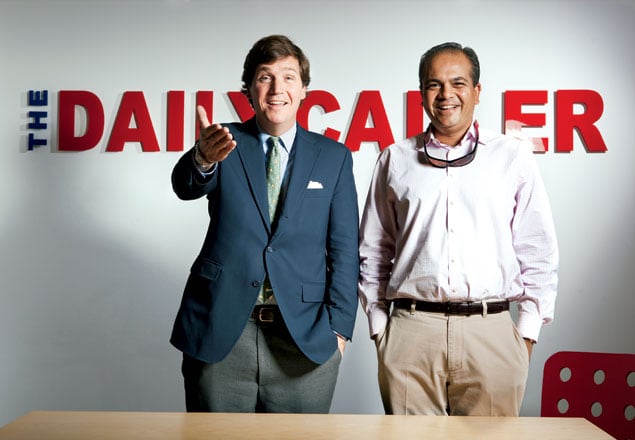
Carlson spent several years appearing as a guest while cranking
out stories for the Standard and other magazines, among them Tina
Brown’s now-defunct Talk. It was for Talk that Carlson
wrote his most memorable piece, a profile of then-presidential candidate
George W. Bush, portraying him as likable if also callow and foul-mouthed.
In the most damning passage, Carlson quotes Bush mocking Karla Faye
Tucker, a convicted ax murderer whose case had become an international
cause célèbre, with many calling for a commutation of the death penalty.
(“ ‘Please,’ Bush whimpers, his lips pursed in mock desperation, ‘don’t
kill me.’ ”) It wasn’t a hit piece, or at least Carlson didn’t think it
was. When his wife read it, she worried that readers would assume he was
angling for a White House gig. The Bush clan, on the contrary, felt
betrayed.
Carlson went on to write for the New York Times
Magazine and was, for a time, a columnist at New York, a gig
he says he hated because he dislikes “pontificating in print.” He was also
a finalist for a National Magazine Award for a funny, observant
Esquire piece he wrote about tagging along with Al Sharpton on a
trip to Liberia. The story’s best line: “When you’re facing slow death by
acetylene torch, even a third-tier American presidential candidate can
look like a lifeline.”
In 2000, Carlson was selected to cohost a show on CNN, which
sounds more impressive than it was. The show was a late-night experiment
called The Spin Room. The set was a couple of chairs and a metal
stand with a TV resting on it. There was no rug until a viewer sent one
in.
The fact that CNN didn’t appear to care made the show more fun
for Carlson and Bill Press, his liberal co-conspirator. It was goofier and
more freeform than the channel’s other offerings, just a couple of guys
jawing over the day’s events, answering viewer mail, eating hamburgers,
and talking to Dr. Ruth about their sex lives. Carlson took to introducing
The Spin Room as “the only show on television for and about the
people of Canada.” It had its fans, and still does—even now, Press says he
gets approached by people who remember it fondly.
TV critics weren’t among the enthusiasts. One called it “the
worst show in the history of CNN.” When Carlson and Press wanted to use
that quote in the promotional clips, the suits were not amused. After less
than a year, the show was pulled off, or put down, and Carlson took the
place of Mary Matalin on Crossfire, CNN’s signature debate
program.
Even back then, there were complaints that Carlson was
insufficiently conservative, that he lacked the ideological bona fides to
represent the right wing. But he got the job because CNN believed he was
star material. One producer took him aside and prophesied: “You’re about
to break out.”
By 2004, Carlson was no longer a TV newbie. He could follow the
teleprompter, making the words seem like his own. (The trick, he says, is
to ad-lib a bit.) He could banter while counting down the seconds to a
commercial break. He could ignore the producer’s chatter in his earpiece.
He was now a familiar pixilated presence, known enough to be a punchline
on Curb Your Enthusiasm. The joke was inevitably about bow
ties.
The segment that defined his time on Crossfire, and
that drove a stake through the show, was an interview with Daily
Show host Jon Stewart. Those 14 minutes went viral online back when
going viral was still a novelty. The millions of views it received helped
inspire 25-year-old Jawed Karim and a couple of buddies to create a little
video-sharing site they called YouTube.
On the show that day, Carlson, in a bow tie with red polka
dots, looks as if he’s running for class treasurer or, as his friend Matt
Labash put it, like “the preppy villain in a John Hughes movie.” Stewart,
in a V-neck pullover, appears to have wandered in from a hipster literary
event, which turns out to be exactly what he’s done, coming to the studio
fresh from a signing for America (the Book): A Citizen’s Guide to
Democracy Inaction. Stewart opens by telling Paul Begala and Carlson
that they’re “hurting America,” drawing out the “r” in “hurting” for comic
emphasis. The critique is hardly original—cable news has been laughed at
and lambasted since it began. But it’s rare to hear such a blunt
condemnation expressed with the hosts of such a show sitting right there.
Stewart calls what they do “knee-jerk, reactionary talk.”
Begala attempts, lamely, to deflect the blows by pretending
that Stewart is scolding them for their aggressive interrogations. “You’re
not too rough on them,” Stewart says. “You’re part of their strategies.
You’re partisan—what do you call it?—hacks.”
After enduring a couple of Stewart’s barbs without answering in
kind, Carlson goes on the offensive, needling Stewart about his softball
interview with John Kerry. Stewart tosses out a funny line—“I was actually
giving him a hot-stone massage as we were doing it”—but it’s clear he’s
annoyed. Carlson attempts to dial it down, to put the show back on track:
“We’re here to love you, not confront you. We’re here to be
nice.”
“I’m not,” replies Stewart. “I’m here to confront
you.”
The climax occurs when Carlson tries to mete out some snide
justice as he goes to a commercial. “I do think you’re more fun on your
show,” he tells Stewart. “Just my opinion.” This is delivered with a
straight face, but it’s a kiss-off. Stewart, a former standup comic who
has dealt with hecklers before, gives better than he gets: “You’re as big
a dick on your show as you are on any show.”
Carlson’s view then and now is that Stewart embarrassed
himself, that he was being ridiculously sanctimonious, and that the only
reason most people don’t see it that way is because most people believe
Saint Stewart can do no wrong. He lost to the more popular boy. But if you
showed that clip to a dozen Amish and asked them to declare a winner, my
guess is they’d point to the guy in the pullover.
Crossfire was canceled soon afterward, and Carlson
moved to MSNBC to host The Situation With Tucker Carlson, which
later was shortened to his first name. The show is probably most
remembered for giving Rachel Maddow significant airtime, but it was an
engaging program with respectful conversations. Carlson didn’t shout
guests down. The format was still about debate, but the feel was looser,
less combative, closer to Carlson’s personality. That show was canceled,
too, when MSNBC embraced a strident, across-the-board lefty philosophy to
compete with the strident, across-the-board righty philosophy of Fox News.
Keith Olbermann was in. Carlson was out.
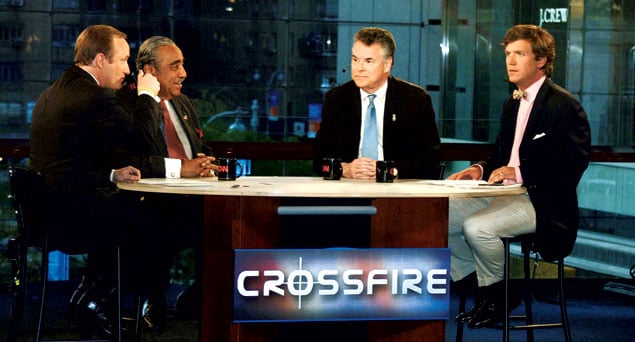
until it was canceled in 2005 following a segment with “Daily Show” host
Jon Stewart. Photograph by William Reagan/Globe Photos/Zumapress.
You’d like Tucker Carlson if you met him. You wouldn’t be able
to help it. He’s curious and convivial, self-deprecating and smart. He
seems glad to be wherever he is. People who know him toss around
adjectives like cheerful, lighthearted, generous. One friend of Carlson’s
has called him “the happiest guy you’ll ever meet.” Another says he has
one of those rare, outsize personalities that come equipped with a
listening mode. He dispenses advice freely—which, he acknowledges, can be
an off-putting trait, but the tone is less condescending jerk and more
buddy with the inside scoop. When the waitress sets his lunch in front of
him (Caesar salad topped with steak), he responds as if she’s surprised
him with an early Christmas gift: “Fantastic!”
Some facts about Carlson, in no particular order: He married
his high-school sweetheart when he was 22. He has four kids, one of whom
is college-shopping and another who attends the same Rhode Island boarding
school Carlson went to. He grew up outside San Diego. He has a place in
Maine and spends most summer weekends there. He says he reads the New
Yorker cover to cover even though he finds editor David Remnick’s
politics “embarrassing.” He subscribes to more than one fly-fishing
magazine and has been known to bestow gear on friends he believes should
take up the pastime.
In 2003, Carlson’s first and so far only book, Politicians,
Partisans, and Parasites, was published. It isn’t a partisan screed à
la Ann Coulter, which may explain why it wasn’t a bestseller. Instead it’s
a collection of amusing anecdotes and observations. You don’t get much of
Carlson’s personal life or early history, though there are hints about his
personality. He calls John McCain a “belligerent wiseass,” which he means
as a compliment. Bush is “a bit of a towel-snapper but in a way I found
charming.” It’s hard not to see Carlson reflected in those
descriptions.
He writes about the transition from print guy to cable host.
One change is that the hate mail becomes more personal. Before, they hated
your article; now they hate you: “There’s something about you that
somebody else finds offensive, loathsome, repulsive. It can hurt your
feelings.” To cope with this, he came up with a standard
response:
Dear Mr. Jones,
F— you.
Sincerely,
Tucker Carlson
Carlson claims never to have read his book, and I believe him.
He seems to have no idea what’s in it. I also read him a few quotes from
interviews he’s given, including an odd one from Elle magazine in
which he shares, among other opinions, his belief that most women like a
good spanking. He gives me a blank look. He doesn’t remember saying that.
Tucker Carlson doesn’t dwell on, or in some cases even remember, his own
past. Whatever faults he may have, navel-gazing isn’t among
them.
He gave up booze years ago—same with cigarettes—and stays away
from caffeine. But he’s a slave to Nicorette. He chews the
nicotine-infused gum at a rate inconsistent with the manufacturer’s
recommended dosage. He used to order expired Nicorette from eBay but
stopped after it began to make him feel funny. Now he has a supplier in
New Zealand.
“How much do you go through in a week?”
“An ample amount.”
“More than one package a day?”
“I don’t deny myself.”
“What if someone were to cut your supply?”
“I wouldn’t want that to happen.”
Oh, and he loves dogs. Loves them. When the topic comes up, he
pulls out his iPhone and swipes past pictures of his human family to show
off photos of his springer and English cocker spaniels, Meg and Dave. One
of the dogs sleeps in the crook of his arm each night. This fondness may
explain why, a few years back, he said on TV that he thought quarterback
Michael Vick should be executed for running a dogfighting ring. Carlson
later said he “overspoke,” but when I ask him about it he doesn’t seem
penitent. “I’m not in charge of making the decision about who lives or who
dies,” he says. “And it’s a good thing for people who abuse dogs, I
promise you.”
The key to understanding Tucker Carlson may be P.G. Wodehouse,
the British author best known for cranking out comic novels about
sympathetic Bertie Wooster and his omniscient butler, Jeeves. Carlson has
read many of Wodehouse’s 70-plus novels and keeps the author’s collected
short stories on his iPhone. The most pressing problems in the Wodehouse
universe involve girls who are overly eager to wed or wealthy aunts who
threaten to cut off their layabout nephews. The stories are sunny, the
putdowns creative, the dangers few. People with abiding passions are
mocked as bores. Good humor is valued above all. You don’t read Wodehouse
for the plots, which are predictable. You read him for the delightful
turns of phrase. It’s not what he has to say so much as the stylish way he
says it.
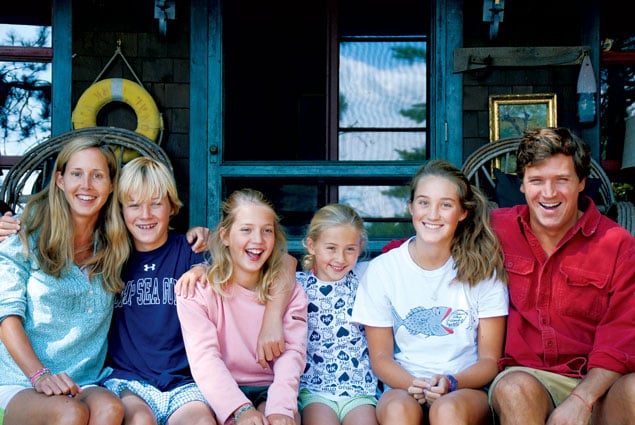
he was 22. They have four kids, the oldest of whom is now shopping for
colleges. Photograph courtesy of Tucker Carlson.
I call Alex Pareene, who writes about politics for Salon and
who recently included Carlson on a running feature of his called the Hack
List. While granting in the article that Carlson was “once a promising
magazine writer,” he sees the rest of his career as a steady decline into
hackdom. In Pareene’s view, Carlson is now an inch-deep cable bloviator
and the editor of a link-baity digital rag. The next step must be
strip-club proprietor.
Pareene mentions in an earlier piece that he had a run-in with
Carlson several years ago when Pareene wrote an item for Wonketteabout
Carlson’s buying an expensive house and included a photo of it. Carlson
wasn’t pleased and rang him up to chew him out. In Carlson’s version, he
threatened to beat up Pareene. “Why wouldn’t I?” says Carlson, who did a
little boxing in high school. In Pareene’s version, Carlson threatened to
“destroy” him. (The kicker is that the photograph was actually first
published on The Washingtonian’s website: Wonkette, as blogs are
wont to do, merely appropriated the content.)
Along the same lines, Carlson once had a public spat with a
video-store clerk. The clerk wrote a blog post about Carlson’s opening an
account at his store. The blogger/clerk wrote: “I could tell you what he
and his ridiculously wasped-out female companion (wife?) rented if you
really want to know.” Carlson confronted the guy at the store and
threatened to “destroy” him.
Both men were spared destruction, though the clerk lost his
job.
To be fair to Carlson, both times he thought someone was
exposing his family to potential harm by revealing personal information.
It’s not an unreasonable worry, however cartoonishly
expressed.
As for whether Carlson is on a downward spiral, that depends on
which way you think is up. Carlson says he doesn’t think about his career
exactly but instead sees a series of jobs that intrigued him. He does miss
writing and reporting, not so much because he enjoyed seeing his byline,
or even writing, but because being forced to take notes makes you engage
with the world more fully. He’s working on a book, but it’s not one he
plans to publish. It’s a book of advice for his kids.
After Carlson was fired from MSNBC, he had lunch at the Palm
with his college buddy Neil Patel. Patel was a close aide to Dick Cheney,
close enough that he spent holidays with the Cheneys at a condo next door
to their home in Jackson Hole, Wyoming, and now owns a place nearby.
Carlson and Patel hatched the idea for the Daily Caller during that lunch.
Patel would take care of the business side; Carlson would handle
editorial. They’d lean on their contacts for opinion pieces. It wasn’t the
most lucrative career possibility for either of them, but it sounded
interesting. And one of Carlson’s life rules is to choose the more
interesting option.
They pitched the idea to investor and philanthropist Foster
Friess, who, according to his website, is committed to promoting “Founding
Father principles” and “traditional American values.” He’s known for
supporting Rick Santorum’s failed bid for the Republican presidential
nomination and for saying in an interview that back in his day aspirin was
considered an effective form of birth control. “The gals put it between
their knees, and it wasn’t that costly,” he told MSNBC’s Andrea Mitchell,
leaving her momentarily at a loss for words.
Carlson and Patel courted Friess over a meal, and he offered
them $3 million before the main course arrived. When the Caller launched
in 2010, Carlson described its mission this way: “Our goal is not to get
Republicans elected. Our goal is to explain what your government is
doing.” As if to make good on that pledge, he hired Megan Mulligan away
from the not exactly conservative Guardian and put her in charge
of the day-to-day editorial operation. No one expected a publication run
by Carlson and Patel to be a paragon of objectivity, but this seemed like
a sign the Caller might be fair if not completely balanced.
The Caller is forever being compared to the Huffington Post.
Both mix actual political news with slapdash opinion columns and lowbrow
slide shows (“10 Women Hotter Than Mila Kunis”). But there are
differences, too. The Caller puts more emphasis on its own reporting,
whereas HuffPo is happy to feature someone else’s story. The Caller’s
headlines tend to be less misleading and opaque. And the Caller, while not
averse to linking to a photo of Kate Middleton doffing her top, doesn’t
have the same unrelenting fetish for famous women’s accidentally exposed
body parts.
The scoop that put the Caller on the map was a story by
Jonathan Strong about the spending of the Republican National Committee
under its former chairman Michael Steele—which included dropping nearly
$2,000 at a bondage-themed nightclub and steep bills for renting private
planes. The Caller made another splash a few months later when it
published excerpts of e-mails from JournoList, a clubby listserv started
by liberal Washington Post blogger Ezra Klein. While the e-mails
weren’t much different from the post-deadline kvetching journalists have
always engaged in, they were treated like evidence of the liberal-media
conspiracy that conservatives had long suspected.
More recently, the Caller found what was apparently the Twitter
feed of Trayvon Martin, the Florida teenager shot to death by
self-appointed neighborhood watchman George Zimmerman. There wasn’t much
there, save for some salaciously dumb retweets ( “My you have a long
tongue. What do you use it for?”), and the Caller was pilloried in some
quarters for playing up the tweets as a scoop and for generally pushing an
anti-Martin narrative. Less remembered was the Caller’s discovery of
Zimmerman’s MySpace page, which was similarly underwhelming, though he had
given himself the somewhat unusual user name “datniggytb.” The last two
letters happen to be Martin’s first two initials.
Then, in June, reporter Neil Munro, who covers the White House
for the Caller, interrupted President Obama in the middle of his remarks
on a new immigration initiative. With his hands in his pockets, his tie
loosened and shirt open, and nary a pencil or reporter’s notebook, Munro
heckled the President: “Why’d you favor foreigners over Americans?”
Carlson defended Munro, saying, “This is what reporters are supposed to
do,” and comparing him to journalist Sam Donaldson (who made it known that
he resented the comparison). According to David Martosko, the Caller’s
executive editor, White House press secretary Jay Carney called to
complain about Munro’s behavior.
Martosko was hired to replace Mulligan, who left in July 2011.
Since her departure, and the departures of several reporters, including
Jonathan Strong—who left to join Roll Call—the site seems to have
tacked more to the right. It has, in the words of one former employee,
turned into “Drudge Report Plus.” Defenders of the Caller like to say that
it’s actually harder on Republicans than Democrats and that complaints to
the contrary illustrate media bias. When I told Martosko I thought the
Caller had clear conservative leanings, he said the assessment said more
about me than about the Caller.
Here’s a sampling of Caller headlines from the day I
interviewed him:
OBAMA CAMPAIGN RESORTS TO TRUTH TELLING
OBAMA TURNS AWAY LITTLE GIRL WITH ASPERGER’S
ANTI_ROMNEY DNC BUS BLOCKS FOOD TRUCK’S PARKING SPOT
MARK LEVIN ASKS WHY OBAMA IS FIXATED ON CONTRACEPTION OVER CANCER, DIABETES AND HEART DISEASE
NEW URBAN DICTIONARY ENTRY PEGS HARRY REID AS CHILD MOLESTER
The first is a story by Munro reporting that the Obama campaign
acknowledged that an anti-Romney ad was misleading. The Asperger’s
headline is a tongue-in-cheek blog post by the pseudonymous Jim Treacher,
whose scorn for Obama and everyone associated with him is limitless. Read
the food-truck story and you learn that the facts contradict the headline.
And as we all know, Obama doesn’t care if his fellow Americans succumb to
leukemia as long as they can have lots of consequence-free
sex.
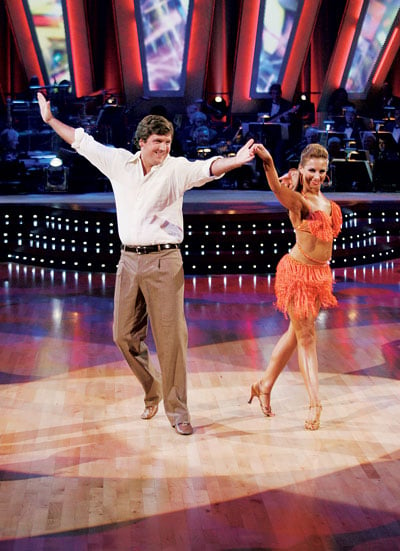
But the worst story of the day, and one of the worst stories
published by the Caller—or, honestly, by any news organization ever—was
the Harry Reid/child-molester story. It’s by Martosko, who, along with
editing much of what shows up on the Caller, also churns out his own copy.
Before joining the Caller, he worked for the Center for Consumer Freedom,
an industry-supported nonprofit that has argued, for instance, that
mercury in tuna might not be so bad for you and that smoking bans infringe
on personal freedom. Martosko came to Carlson, whom he didn’t know well,
asking for career advice. Carlson did him one better and gave him a
job.
“I hired Martosko because he’s smart and aggressive, the two
qualities I care about most in new hires,” Carlson says. “You can teach
journalism. Despite lots of effort to pretend otherwise, it’s not that
complicated. Look at the people who do it.”
Martosko reported that someone had added a definition to the
website Urban Dictionary implying that Harry Reid molests children. The
article ends with the following line: “Reid spokesman Adam Jentleson has
not responded to The Daily Caller’s request, first made August 4, for
confirmation or denial about whether the Senate Majority Leader is in fact
a pederast.” Martosko doesn’t mention the multiple definitions of his
boss, Tucker Carlson, on Urban Dictionary, including “bowtie wearing
pussy” and another definition too obscene and bizarre to print. I could
pretend that this was somehow meaningful or call Carlson to ask him to
confirm or deny, but that would make me a terrible journalist.
The Daily Caller has an entire section devoted to firearms.
Carlson has been a vocal supporter of Second Amendment rights, once
telling an audience that he was “literally in the process of stockpiling
weapons.” This is another instance in which it’s hard to tell if he was
being serious, but this fall the website was giving away one 9-millimeter
handgun a week to readers. The site’s Guns and Gear section contains press
releases from the NRA. Usually reporters are attacked for doing little
more than rewriting press releases. Here they didn’t even go to the
trouble.
Unlike Arianna Huffington, who blogs regularly for her
Huffington Post, Tucker Carlson’s byline is a rarity at the Caller. But in
October Carlson wrote what was billed as a campaign-altering exclusive. It
was rolled out in coordination with The Sean Hannity
Show and the Drudge Report, both of which promoted it as the biggest
revelation ever. What kind of bombshell merited this buildup?
Turns out it was a 2007 video of Barack Obama speaking to a
group of black ministers, praising his former pastor Jeremiah Wright and
complaining that the federal government hadn’t done enough for victims of
Hurricane Katrina. The speech had been reported before, including by
Carlson on his MSNBC show. What made it new, Carlson wrote, were the
sections in which Obama veered from his prepared remarks in a “racially
charged and at times angry” manner. Carlson also called Obama’s accent
“phony.”
The putative game-changer immediately vanished from the
national conversation, thanks in part to Mitt Romney’s genuinely
game-changing debate performance. Carlson and the Caller were ridiculed.
The video wasn’t damaging enough to warrant a White House rebuttal. Even
the Romney campaign wanted no part of it.
If the purpose was to make Obama’s controversial pastor a
liability once again, to portray the President as a race-baiting fraud, it
was a bust. But it did get attention, as evidenced by the 10,000-plus
comments on Carlson’s article. Even those who read the story just to jeer
helped make it a success. A click is a click.
A few weeks later, the Drudge Report trumpeted a forthcoming
Caller story with the headline sex scandal to hit campaign. It turned out
to be a puzzlingly brief article by Matthew Boyle in which he reported
that two prostitutes in the Dominican Republic said they’d had sex with
Bob Menendez, the Democratic senator from New Jersey, and that he hadn’t
fully paid the bill for their services. (A Menendez spokeswoman told the
Caller the allegations were “completely false.”) Like the dated Reverend
Wright scoop, the story generated momentary buzz for the Caller but
fizzled almost instantly, hardly justifying Drudge’s dramatic all-caps
treatment.
The Caller doesn’t always live up to Carlson’s standards.
“There are days when I’m distressed, where we’ve fallen far short of what
I want,” he says. His critique, though, isn’t what you might expect. He’s
most concerned when stories are boring, and he sees tabloids such as the
Daily Mail and the New York Post as models.
The Caller remains a work in progress, he says, comparing it to
a house under construction. The roof is finished, the walls are up, but
there’s much left to be done. Still, it’s no longer in danger of collapse.
“It’s tight against the wind,” he says.
The numbers back that up. The Caller averages 8 million unique
visitors a month, which is the metric Carlson tracks most closely. The
site was profitable for the first time in the second quarter of 2012, not
bad for a publication just two years old.
When Carlson enters the Caller’s office, no one leaps to
attention. He seems more buddy than boss. One young reporter keeps her
feet up on the desk. The flat-screen on the wall is tuned to Fox
News.
Carlson’s corner office is dominated by a beat-up old desk he
bought for $150. It’s clear except for an iPad on a stand and a full-size
keyboard. There are photos of his family and his dogs around the office, a
shot of a much-younger Carlson and his buddies sitting on their
motorcycles, a grip-and-grin with Jerry Garcia. The Grateful Dead is a
leitmotif: A framed tour poster adorns the newsroom.
While Carlson delegates much of the editing, he’s more than a
figurehead. He attends the Caller’s 2:30 pm editorial meeting when he’s
not off giving a paid lecture. Late in the evening, around 11, he selects
the lead story for the next day. But while the Caller is often the first
thing he thinks of in the morning, it’s not the first thing he reads. That
would be the New York Times obituaries, which he peruses on his
phone before getting out of bed. For a guy who hates to be idle, it’s a
reminder that the clock is always ticking. Carlson’s own obit will include
the requisite references to bow ties along with a lengthy list of print
and television gigs.
If the obit writer is feeling cheeky, he or she might also
mention his brief 2006 appearance on Dancing With the Stars, in
which he gamely attempted to appear graceful. A judge on that show, while
panning his performance, conceded the following: “You looked like you had
the best time on the dance floor.”
This article appears in the December 2012 issue of The Washingtonian.

